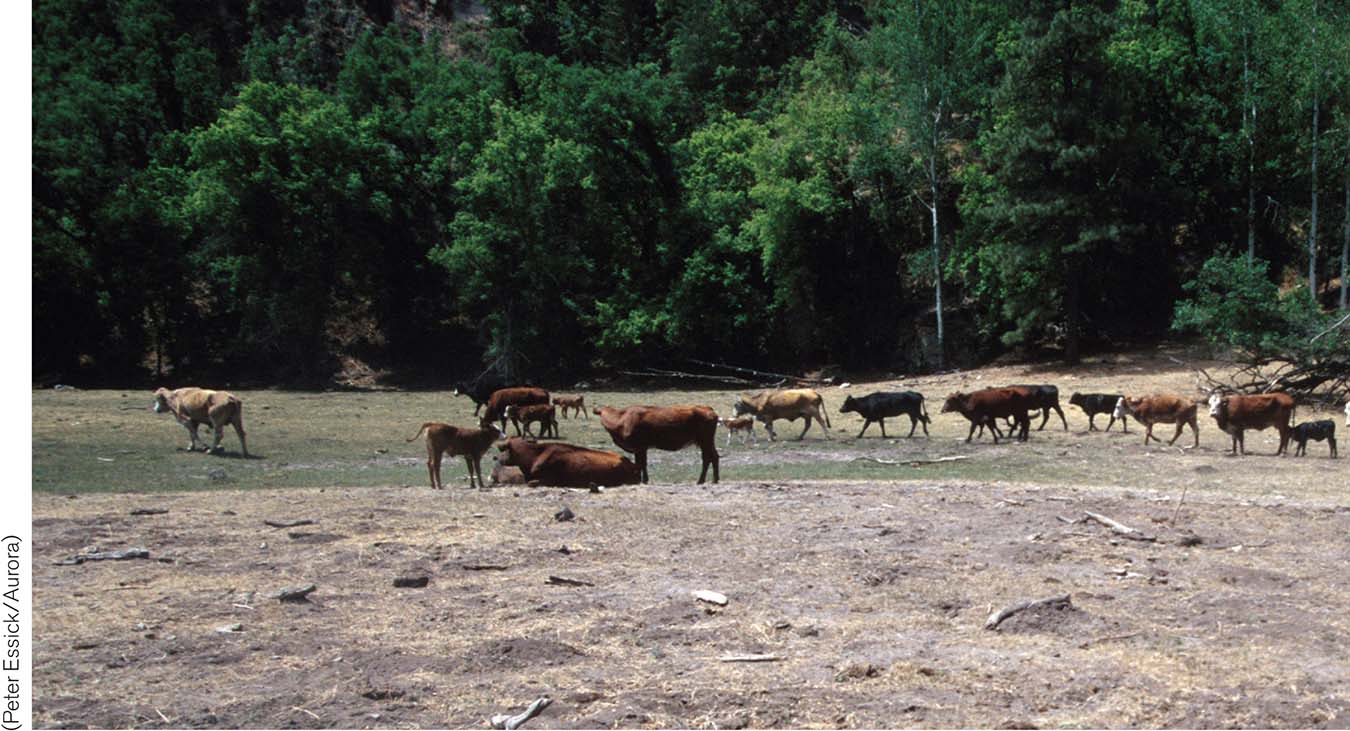2.7 Unregulated use of resources can lead to a “Tragedy of the Commons”
Economists have argued that businesspeople pursuing their own self-
Imagine a pasture available for community use—

What are some potential environmental consequences of viewing the environment as outside or “external” to the economy?
Adding cattle will damage the commons by reducing plant cover, increasing soil erosion, and decreasing future productivity of the grazing land. What are the costs to the individual farmer of damaging the land? Since all the farmers in the community share the costs of overgrazing, the cost to each one of them is only a fraction of the total cost. Therefore, in this situation, profit exceeds costs, so it is profitable for each individual farmer to add to his or her herd. Eventually, the productivity of the pasture is severely reduced and no one benefits (Figure 2.21). Hardin thus concluded in his essay that “freedom in a commons brings ruin to all.”

common-
Hardin extended the logic of his analysis to the use of many other so-
Think About It
What are some assumptions of Hardin’s Tragedy of the Commons argument?
What are some possible scenarios that would avert a Tragedy of the Commons without governmental intervention?
2.5–2.7 Issues: Summary
Human economies sit at the top of the energy pyramid and grow by tapping into natural ecosystems and Earth’s resources. Because economic systems are subject to the same physical laws governing ecosystems, they require inputs of energy and matter in order to keep functioning. Traditional closed economic models include no interactions between the economic system and the environment. The environment is included in open economic models, in which the economic system exchanges energy and materials with the environment. However, in these open models, the environment has been historically represented as “external” to the economic system.
Keeping potential environmental harm external to the economic system fails to account fully for the potential costs of economic activity. In his “Tragedy of the Commons” article, Garrett Hardin argued that unregulated use of a common resource would lead inevitably to its ruin.